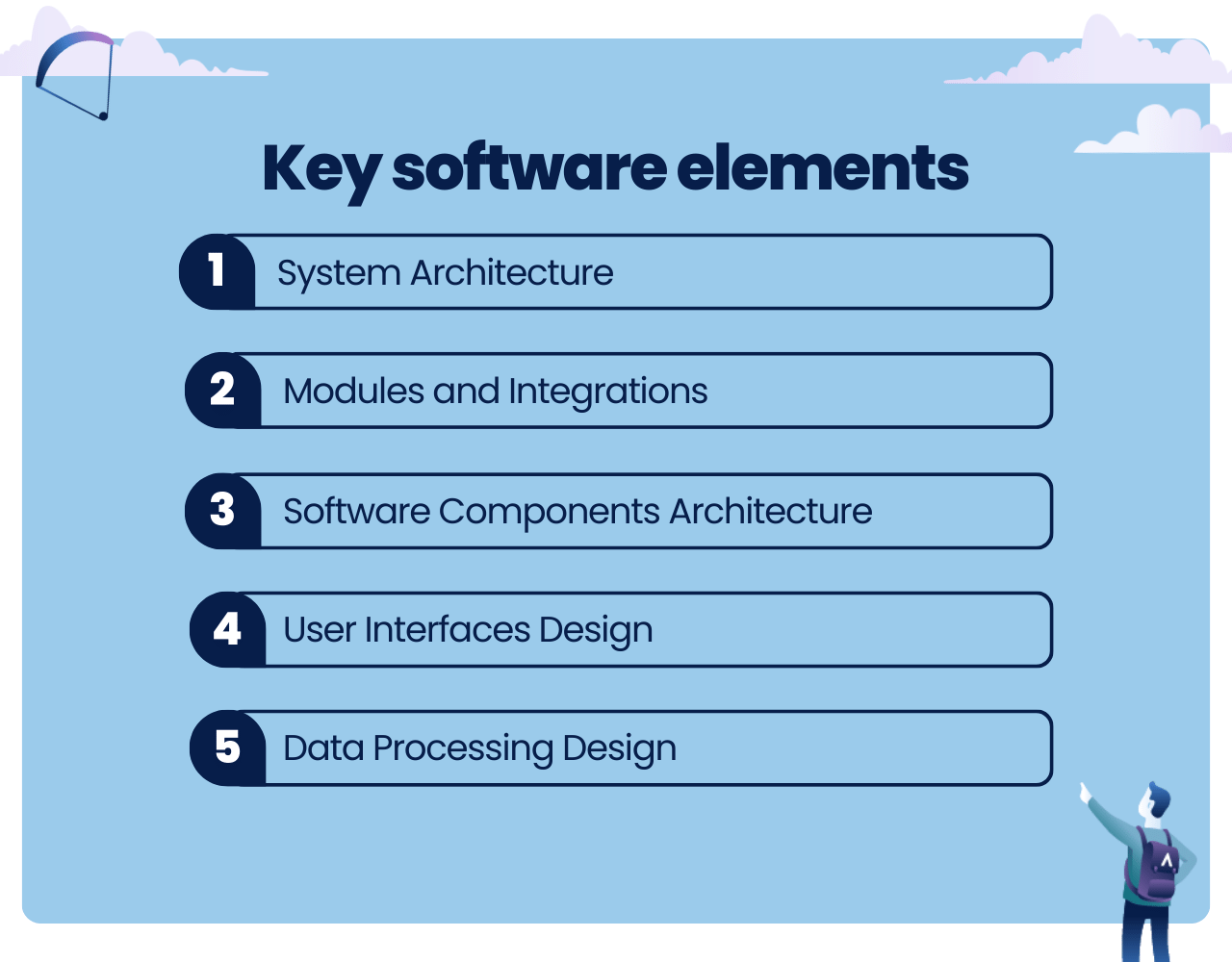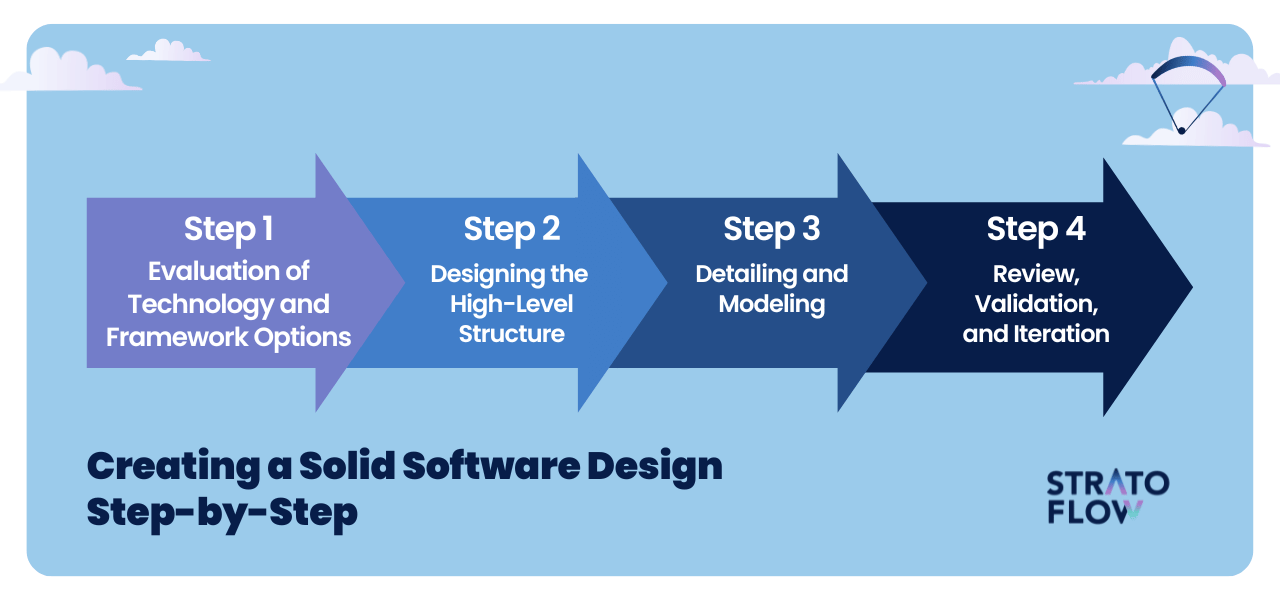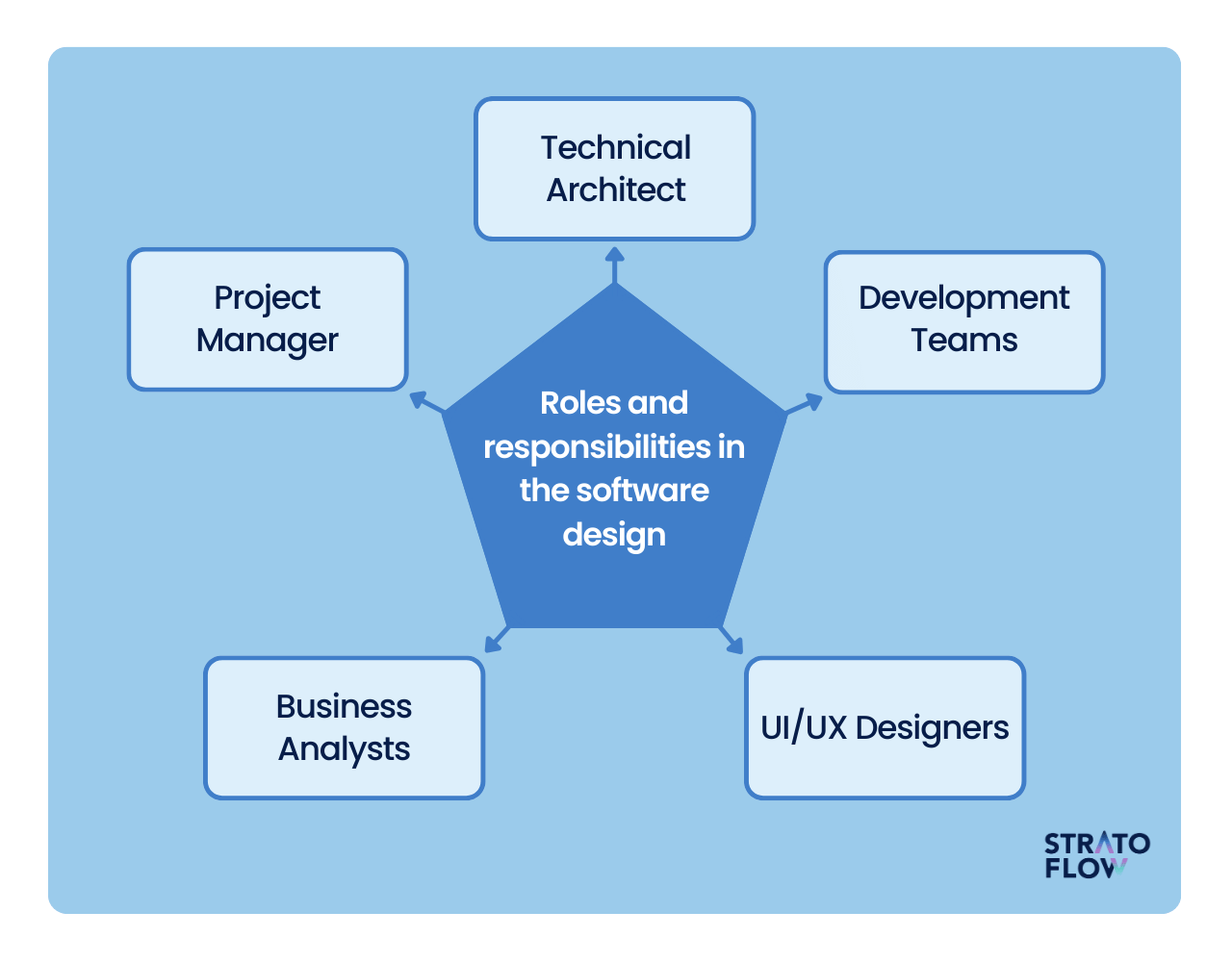
SDLC Guide: How to Conduct Software Design Phase
Have you ever wondered how a software application gets from an idea to a fully functional product?
That’s the task of the software design phase – a key part of the software development process.
In the next installment of our series of articles on the SDLC, we delve into the critical stage where ideas are transformed into concrete software designs, laying the foundation for effective development. Join us as we uncover the intricacies of this phase of the software development process and its pivotal role in shaping successful software applications.
What is the design phase in the software development life cycle?
The design phase of the Software Development Life Cycle (SDLC) is a critical step in developing the conceptual blueprint of a software project.
This phase involves transforming the software requirements gathered during the Requirements Analysis phase into a structured design document.
You can think of the design phase in the following way.
If you were building a house, you would have a vision of the final building, its shape and form. We’ve already established that in the previous phases.
But builders need more than a vision. They need a detailed plan to build the whole thing, to make it meet all the technical requirements, and to make it durable and functional.
The design phase would be just that – shaping the plan with much-needed technical details to guide the builders along the way.

After software development planning comes the time for designs.
During this phase of the software development life cycle, the development team creates a detailed blueprint for the architecture and software components.
This includes architectural design, which defines the high-level structure and technical framework of the software, and user interface design, which focuses on visual layout and user experience. There’s also data design, interface design, and security design, all of which support the reliable operation of the software product.
The result of the design phase is a detailed and comprehensive design document that serves as a guide for developers during the next phase – development itself.
This phase is critical to ensuring that the software is built on a solid foundation, is aligned with business objectives, and meets the user requirements identified earlier in the SDLC process.
Importance of well-designed software
Well-designed software is the cornerstone of efficient, scalable and sustainable technology solutions.
Investing time upfront to create an efficient and intelligent design significantly minimizes the risks associated with legacy software and technical debt.
A well-thought-out design anticipates future needs and changes, allowing for easier updates and maintenance, reducing the likelihood of accumulating technical debt that can impede progress and drive up costs.
Key software elements
Any software product, regardless of its final deployment and use case, is made up of key elements – each of which requires a unique approach to design.
Let’s take a quick look at each and see what the key considerations are when designing these software elements.

System architecture
Architecture defines the overall structure of the software system, including how it is divided into components and how these components interact with each other.
When designing the system architecture, scalability, reliability, and maintainability must be considered. It’s important to choose the right architectural style (e.g., microservices, monolithic, layered) that matches the project’s needs and future growth. A well-designed architecture provides a solid foundation for the software, making it easier to update and extend in the future.
Modules
In the context of software design, modules refer to the integration points within the software for external services or APIs.
It is important to create a software architecture that can seamlessly connect and interact with external APIs or third-party services. This requires attention to the compatibility of data formats, communication protocols, and authentication methods. An effective software architecture for system integration is critical for extending the capabilities of the software and allowing it to leverage external data and functionality.
Software components
Software components are the building blocks of software that implement a specific functionality or set of functionalities.
The design of software components requires careful consideration of cohesion and coupling. High cohesion within components and low coupling between components is desirable because it promotes easier maintenance and greater flexibility in modifying and reusing components.
Interfaces
Interfaces define how different software components, modules, or systems communicate and interact with each other.
It’s critical to ensure clarity, simplicity, and consistency in interface design. This includes defining clear protocols and data formats. Well-designed interfaces facilitate smooth interaction between different parts of the software and external systems, thereby enhancing the system’s integration capabilities and user interaction.
Data
Designing a cohesive data management and processing architecture involves the design of data storage, management, and processing mechanisms.
Key data design considerations include data integrity, security, and efficiency. The design should ensure that data is stored in a structured, accessible manner that facilitates efficient data retrieval and manipulation.
For example, a tempting option for SaaS companies here is the multitenant data architecture. Multitenancy is an architecture where a single instance of a software application serves multiple customers or ‘tenants’, keeping their data separate and secure.
How to design software step by step?
Now that we understand what goes into software design, let’s take a closer look at what the process really looks like.
Remember, we’re at the stage in the SDLC where we’ve already established requirements and defined all of our stakeholders. Now it’s time to turn that idea into tangible and technical architectural designs that software developers can build the application on.

Step 1: Evaluation of Technology and Framework Options
This step involves a critical examination and selection of the technology stack and frameworks.
It requires thorough research to understand the strengths and limitations of various technologies in relation to the project’s requirements. Factors like scalability, performance, compatibility with existing systems, and future maintenance needs are considered.
The outcome of this step is a well-informed decision on the technologies and frameworks that will provide the best foundation for the software, ensuring that it is robust, efficient, and adaptable to future changes.
Step 2: Designing the High-Level Structure
Once the appropriate technologies have been selected, the focus shifts to developing the high-level architectural design.
This design outlines the major components and modules of the software and how they interact. Decisions are made about the architectural pattern (such as microservices or monolithic), the distribution of responsibilities among different parts of the system, and the overall data flow.
The result is a blueprint that provides a clear and coherent structure to guide the detailed design and development phases.
Step 3: Detailing and Modeling
In this phase, the high-level architecture is translated into detailed design specifications for each component and module.
This includes defining the exact behavior, interfaces, and data models for each part of the system. Tools and notations such as the Unified Modeling Language (UML) are often used to produce clear and standardized documentation.
The goal is to provide developers with comprehensive implementation guidance to ensure that the final product closely matches the intended architecture.
Step 4: Review, Validation, and Iteration
The final step is a rigorous review and validation process.
The architecture is scrutinized by stakeholders, including technical leads and potential end users, to ensure that it meets all functional and non-functional requirements. This phase often involves iterating on the design based on feedback, addressing any shortcomings, and refining the architecture.
The goal is to confirm the viability and effectiveness of the architectural design before moving into the development phase, thereby reducing the risk of significant problems or rework later in the project.
[Read also: Off the Shelf vs Custom Software: Pros & Cons + Examples]
Roles and responsibilities in the software design phase
In the software design phase of a project, various roles come together to ensure the creation of a comprehensive and effective design.
Some of these key roles include:

Project Manager
The project manager oversees the entire design phase and ensures that the project stays on schedule and within budget. They facilitate communication among all stakeholders, resolve conflicts, and ensure that project objectives are met. The project manager also plays a critical role in resource allocation and risk management.
Technical Architect
The technical architect is responsible for the overall technical design of the software. They decide on the software’s architecture, technology stack, and integration strategies with other systems.
Development Teams
These are the people who will ultimately build the software based on the design. During the design phase, they provide input on the feasibility of the proposed design, estimate the time and resources required, and may create prototypes.
UI/UX Designers
They are responsible for designing the user interface and user experience of the software. This includes creating wireframes, mockups, and interactive prototypes, ensuring the software is intuitive, user-friendly, and aesthetically pleasing.
Business Analysts
Business analysts bridge the gap between business needs and technical solutions. They help gather and interpret requirements to ensure that the software design meets business goals and user needs.
Designing software faster and more efficiently
Up to this point, we’re on our way to having a very solid foundation for our custom software development project.
But there’s one very big caveat – the cost of software development.
Custom software development is notoriously time-consuming and expensive.
Just to get to this point, we have already spent countless hours of everyone’s time and invested serious money into the project.
One of the trends in enterprise software development lately have been rapid development platforms like Openkoda which can significantly speed up and streamline the software development process.

These platforms offer a set of pre-built modules and easy-to-use interfaces that simplify complex coding tasks, enabling organizations to develop software solutions faster and with less technical expertise.
With Openkoda, organizations can cover the basics of software design with a solid and extensible core. They can focus on the parts that matter right away – a major boost to the speed of the entire process.
The next phase of the software development process
After the design phase in the Software Development Life Cycle (SDLC), the next phases are development, testing, deployment, and maintenance.
In the development phase, the actual software is coded and built according to the design specifications. The testing phase then rigorously evaluates the software for bugs, performance issues, and compliance with requirements to ensure quality and reliability.
Once the software has passed testing, it enters the deployment phase, where it is made available for use in a production environment. This may involve installing, configuring, and activating the software for end users. The final phase, maintenance, involves ongoing support and updates for the software.
This includes resolving any issues that arise, making improvements, and ensuring that the software remains effective and secure over time. These phases are critical to turning the initial design into a functional, reliable, and efficient software product that meets business needs.
Conclusion
In summary, mastering the software design phase is critical to the success of any software development project.
By carefully analyzing requirements, selecting the right technologies, and focusing on well-structured system architecture, modules, and components, teams can build a solid foundation for their software.
Related Posts
- Online Shopping Recommendations – How to Introduce Them in Your Business?
- Amazon Product Recommendation System: How Does Amazon’s Algorithm Work?
- Movie Recommendation System: How It Works And How To Introduce It In Your Business
- Your Guide to Property Management Software Development
- SDLC Guide: Best Strategies and Practices for Successful Software Deployment Phase
Thank you for taking the time to read our blog post!
